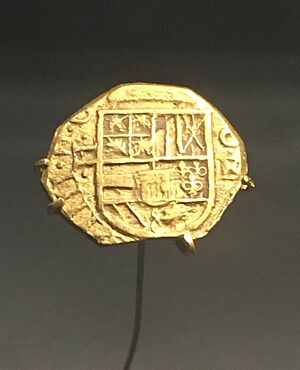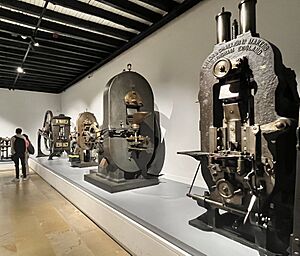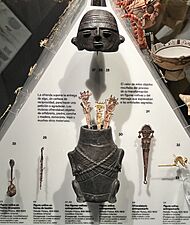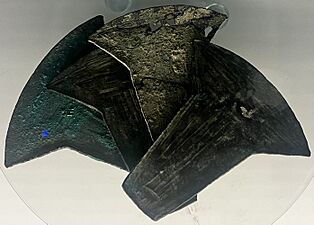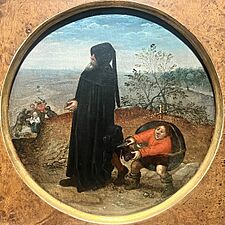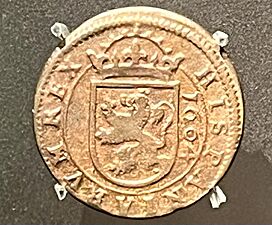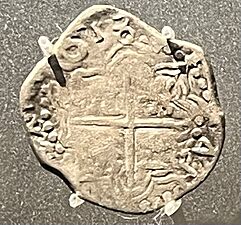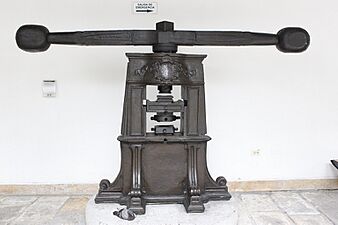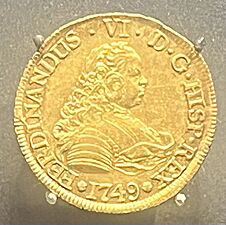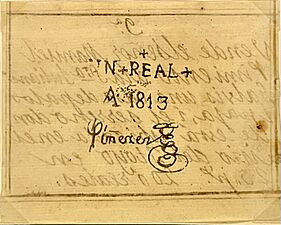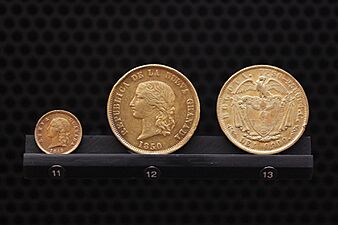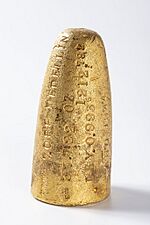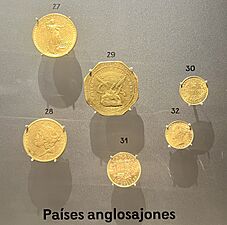Museo Casa de Moneda facts for kids
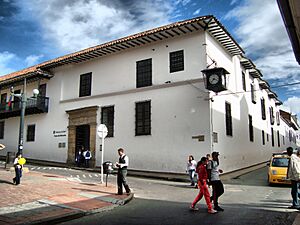
Street view of the museum
|
|
| Established | July 20, 1961 |
|---|---|
| Location | Calle 11 # 4-93 Bogotá |
| Type | Numismatics |
| Public transit access | Museo del Oro station |
The Museo Casa de Moneda (which means Mint Museum in Spanish) is a cool museum in the La Candelaria neighborhood of Bogotá, Colombia. It is managed by the Bank of the Republic of Colombia. The museum shows off a huge collection of about 18,600 items. These items include artwork, banknotes (paper money), coins, medals, and tools used for printing. These treasures come from different times and places around the world.
The museum is located in the very same building that used to be the main place for making coins. This building served the New Kingdom of Granada, New Granada, and later modern-day Colombia from 1621 until 1987. After 1987, coin making moved to a new factory called the Fábrica de Moneda in Ibagué.
The Museo Casa de Moneda is part of a bigger group called the Banrepcultural Network. Other famous places in this network in Bogotá include the Botero Museum, the Gold Museum, the Luis Ángel Arango Library, and the Miguel Urrutia Art Museum.
Contents
History of the Mint Museum
The museum stands on the spot where the New Kingdom of Granada first started making its own coins. This first mint was set up in 1621 by order of Philip III of Spain. It was founded by a Spanish military engineer named Alonso Turrillo de Yebra. The name "casa de moneda" literally means "mint" or "house of money."
To show how Colombian money changed over time, from the early colonial days to the modern republic, the Bank of the Republic opened the Numismatic Museum on July 20, 1961. This was the first time its large collection of coins and banknotes was shown to the public. Back then, the museum had 1,032 pieces. This included 400 special gold coins called macuquinas, which were made between 1628 and 1636. These coins were found in the Magdalena River and are known as the Tesoro del Mesuno (Mesuno Treasure).
On July 11, 1975, the building where the museum is located was declared a National Treasure. This was because of its important history. In 1982, a new coin factory, the Fábrica de Moneda, was built in Ibagué. The old Casa de Moneda stopped making coins in 1987.
The Museo Casa de Moneda reopened to the public on July 23, 2023. This was a special event to celebrate 100 years of the Bank of the Republic. The museum now has a brand new permanent exhibition for everyone to enjoy.
What You Can See: The Collection
The Museo Casa de Moneda itself doesn't have its own permanent collection. Instead, it is used by the Banco de la República to show its amazing collection of coins and money. It also displays some art and ancient artifacts from the Gold Museum. These items help tell the story of money and its history.
After its latest update in August 2023, the Museo Casa de Moneda has 11 different exhibitions.
Early Mints and Money History
The first exhibition, Casa de Moneda Santafé, explores the history of the very first places where coins were made in the Spanish Empire in the New World. The museum is inside the Santafé de Bogotá Mint building. This building was started by Philip III of Spain in 1620 to make gold and silver coins for the New Kingdom of Granada.
The second exhibition, History of Currency, shows many different types of early money. You can see cacao seeds and shell money used long ago. There are also examples of things like barley and even cigarettes that were used as money in some places.
Money in New Granada
The third and fourth exhibitions, History of currency in the New Kingdom of Granada: the Habsburgs and History of currency in the New Kingdom of Granada: the Bourbons, tell the story of money in Spanish America. They focus on the New Kingdom of Granada. Here, you can see Spanish Empire coins made with silver from a famous mountain called Cerro Rico in Potosí. There are also gold coins made from gold found in colonial Antioquia and Chocó.
The fifth exhibit, Independence, shows the history of money during the time when Spanish American countries fought for their freedom. It also covers the period of the First Republic of New Granada.
How Money is Made
The sixth exhibition, How are Coins Made?, teaches you about the different ways coins have been produced. It shows the old handmade methods, then how machines started to help, and finally how modern industrial processes work. Similarly, the eighth exhibition How are Banknotes Made? explains how paper money has been made in Colombia during three important periods.
Modern Money and Art
Exhibitions seven, nine, ten, and eleven cover the history of money in the 19th, 20th, and 21st centuries. There is also a special exhibition that looks at how money and coins are shown in art.
Gallery
-
Axe-monies from the Manteño-Huancavilca culture in pre-Columbian Ecuador
-
The Misanthrope (1600) by Pieter Brueghel the Younger
-
8 Maravedís from the Crown of Castile, 1604
-
4 Spanish escudo gold coin minted in the Captaincy General of Chile, 1749
-
Mesuno Treasure coins from Honda, Tolima
-
Early Colombian peso coins, 1850s
-
Gold bar from the Medellín Mint in shape of a projectile, 1944
-
Gold bullion coins from various Anglosphere nations
See also
 In Spanish: Casa de Moneda de Colombia para niños
In Spanish: Casa de Moneda de Colombia para niños
- List of numismatic collections
- List of Mints


